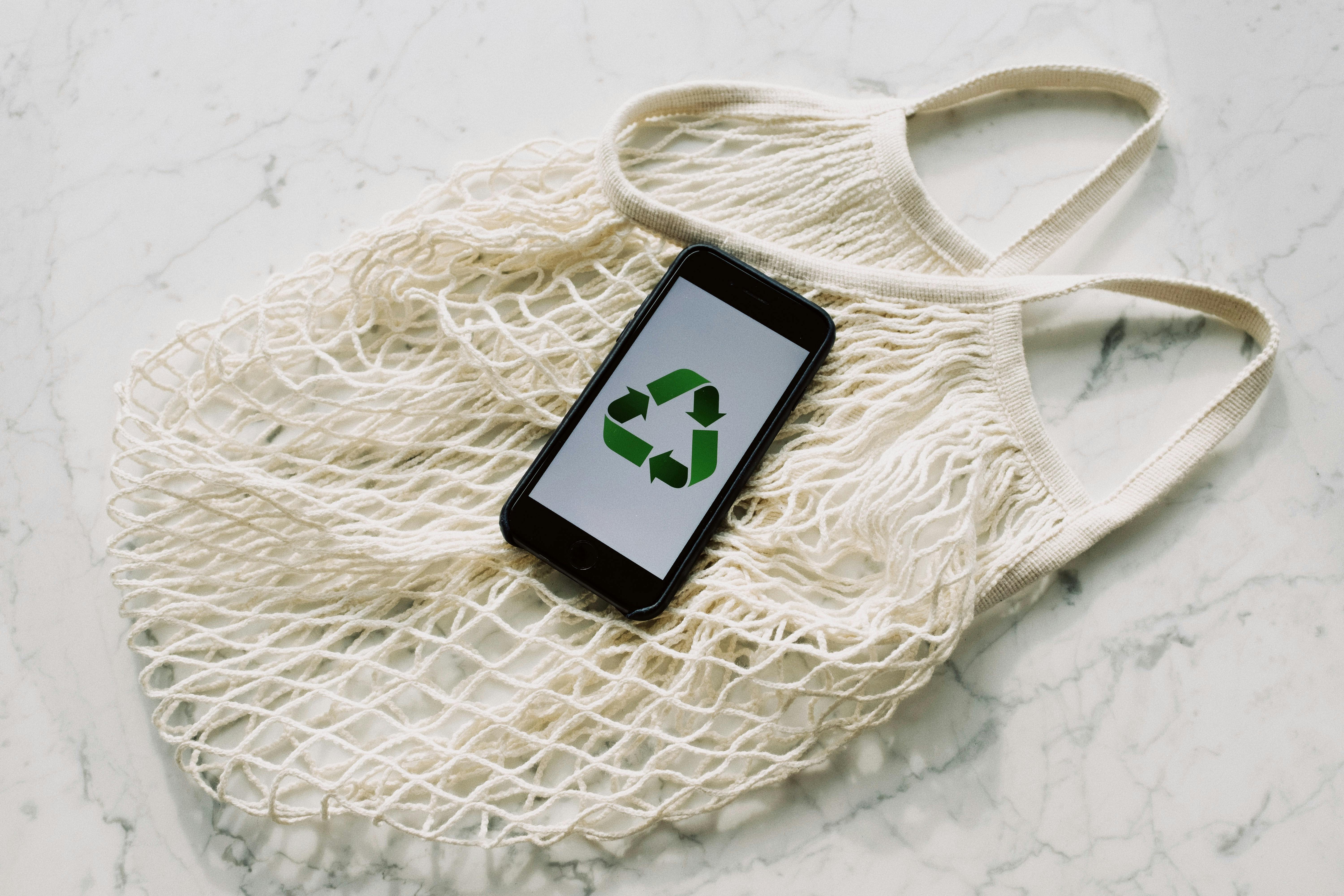5901 Botham Jean Blvd, Dallas, TX 75215
How Can Businesses Reduce Waste Disposal Costs?
July 17, 2025The average commercial business generates nearly 2 tons of waste annually, with disposal costs increasing by 5-10% each year. These rising expenses directly affect bottom lines across industries. Many businesses incur higher-than-necessary waste disposal costs due to a lack of effective management strategies.
Waste disposal is not merely an operational expense—it’s an opportunity for savings. Companies that introduce strategic waste reduction programs typically cut disposal costs by 30-50%. This results in significant savings, with small businesses potentially saving thousands of dollars and larger operations saving millions annually.
As landfill space dwindles and environmental regulations tighten, businesses face increasing pressure to manage waste more efficiently. The positive news is that reducing waste disposal costs does not require complex systems. It begins with understanding what you discard and implementing targeted strategies to minimize it.
How Can Waste Assessments and Audits Help?

Waste assessments and audits are essential diagnostic tools that offer businesses a clear understanding of their waste generation patterns. By systematically analyzing discarded materials, companies can identify inefficiencies, discover recycling opportunities, and implement targeted waste reduction strategies that benefit both their finances and the environment.
Identifying Inefficiencies in Waste Management
A thorough waste audit reveals exactly what materials enter your waste stream and in what quantities. This baseline measurement provides hard data, clarifying which departments or processes produce the most waste. For many businesses, this analysis uncovers unexpected waste patterns.
These assessments often reveal that bins are serviced too frequently or inadequately, and that collection systems aren’t optimized for the waste types generated. Some companies discover they’re paying for half-empty dumpsters, while others find overflowing bins that create workplace hazards. Mapping these inefficiencies enables businesses to restructure their waste management programs for maximum effectiveness.
Analyzing Waste Composition
One of the most valuable insights from waste audits is the detailed breakdown of waste types by volume and weight. Many organizations are surprised to learn that paper and cardboard constitute 30-40% of their waste stream, while businesses with cafeterias might find food waste represents 20-25% of their total waste.
This composition analysis often indicates that a substantial portion of landfill materials could be diverted through recycling or composting. Waste audits also highlight contamination issues where recyclable streams contain non-recyclables or vice versa, pointing to opportunities for improved signage, bin placement, and employee education.
Uncovering Cost-Saving Opportunities
The financial benefits of waste audits often provide the most compelling reason for action. By quantifying disposal costs for different materials, businesses can calculate potential savings from improved diversion and recycling efforts. These savings typically come through multiple channels:
- Reduced disposal fees as less waste goes to landfills
- Optimized collection schedules based on actual needs rather than estimates
- New revenue streams from recovering valuable recyclable materials
- Lower purchasing costs by identifying reusable items
With municipal solid waste fees having increased by over 28% in the last decade, reducing landfill-bound materials translates directly to significant cost reductions. Many businesses find they can reduce waste expenses by 20% or more following a waste audit, far exceeding the initial investment in the assessment itself.
Supporting Sustainability and Compliance
Beyond direct cost savings, waste audits provide essential metrics for sustainability reporting and regulatory compliance. The data helps businesses establish key performance indicators such as waste diversion rates, which measure the percentage of waste kept out of landfills.
These metrics support compliance with various certification programs, including LEED and TRUE Zero Waste. In some jurisdictions, waste audits are explicitly required by law. For instance, San Francisco’s Refuse Separation Ordinance mandates that large waste generators conduct recycling, composting, and trash audits every three years.
How to Conduct a Basic Waste Audit
Conducting a waste audit doesn’t need to be overly complex. Here’s a simplified approach businesses can follow:
- Form a team: Assemble representatives from different departments to ensure comprehensive insights.
- Gather supplies: Collect gloves, tarps, scales, bins for sorting, and documentation materials.
- Select the timing: Choose a typical operational period, ideally collecting waste from Tuesday through Thursday when operations are normal.
- Sort and categorize: Separate waste into categories like paper, cardboard, plastics, food waste, and metals.
- Weigh and record: Measure each category and calculate percentages of your total waste stream.
- Analyze findings: Identify recyclables incorrectly sent to landfill and major sources of waste.
- Develop an action plan: Create specific initiatives with clear responsibilities and measurable targets.
Real Results: Manufacturing Facility Transforms Waste into Savings
A manufacturing company conducted a waste audit and discovered materials worth approximately $75,000 annually were being sent to landfills. The audit revealed that most of this waste consisted of recyclable materials like cardboard packaging, scrap metal, and reusable containers.
By implementing targeted recycling programs based on the audit findings, the company reduced its waste expenses by 52%. They established dedicated collection points for different materials and trained employees on proper sorting practices. Not only did they save on disposal costs, but they also developed a new revenue stream from recovering valuable metals and other materials.
The company continued to conduct quarterly mini-audits to track progress and make adjustments to their waste management program. Within 18 months, their waste diversion rate increased from 15% to over 65%, demonstrating how a single waste assessment can trigger transformative results.
Waste audits and assessments provide the foundation for effective waste management by replacing assumptions with data. The insights gained allow businesses to develop targeted strategies that reduce costs, improve sustainability, and optimize operations. What begins as a simple evaluation of trash often reveals valuable opportunities that benefit both the environment and the bottom line.
What Are Effective Source Reduction Strategies?
Source reduction is the most environmentally preferred strategy in waste management. Unlike recycling, which manages waste after it is created, source reduction prevents waste from being generated initially. This approach directly reduces disposal costs while conserving resources and decreasing pollution.
Organizations can implement several practical strategies to achieve meaningful waste reduction at the source:
Packaging Reduction
Excessive packaging contributes significantly to waste. Smart packaging choices can substantially reduce your waste stream:
- Request suppliers minimize packaging or provide reusable containers
- Select products with minimal or recyclable packaging
- Utilize reusable shipping containers for both internal and external transfers
- Remove unnecessary layers of packaging from products
Switch to Reusable Materials
Replacing single-use items with durable alternatives leads to immediate waste reduction:
- Provide reusable dishes, utensils, and cups in break rooms
- Use rechargeable batteries instead of disposables
- Install refillable soap and sanitizer dispensers
- Adopt washable cleaning cloths instead of paper towels
Embrace Digital Documentation
Reducing paper use offers an accessible opportunity for source reduction:
- Adopt paperless billing and payment systems
- Use digital forms and signatures for internal processes
- Store documents in cloud systems instead of printing
- Set printers to default to double-sided printing
- Distribute reports and newsletters electronically
Optimize Inventory Management
Efficient inventory systems prevent waste from expired or obsolete materials:
- Implement just-in-time ordering to reduce storage needs
- Use first-in, first-out (FIFO) systems for perishable materials
- Track material usage patterns to avoid overordering
- Purchase in appropriate quantities to minimize packaging
- Conduct regular inventory audits to identify waste sources
Equipment and Technology Upgrades
Waste may result from outdated equipment or processes:
- Upgrade to more efficient machinery that produces less waste
- Implement technologies that allow for precise material application
- Regularly calibrate equipment to prevent material overuse
- Invest in repairable equipment rather than disposable options
Source reduction offers benefits beyond waste reduction. Organizations implementing these strategies typically experience cost savings, improved operational efficiency, and enhanced reputations with environmentally conscious stakeholders. The key is starting with easily implementable changes and gradually building a comprehensive source reduction program.
How Can Recycling and Composting Reduce Costs?

Implementing robust recycling and composting programs offers businesses a practical strategy to significantly reduce waste management expenses. Every ton of material diverted from landfills translates to direct savings on tipping fees, which have been increasing in recent years due to inflation and capacity challenges.
Landfill disposal costs create a substantial financial burden for many organizations. By committing to recycling programs, businesses can reduce these expenses by decreasing waste volume. According to the Institute for Local Self-Reliance, recycling can generate up to ten times more jobs per ton of material recycled than landfilling, while simultaneously cutting disposal costs.
Proper waste sorting is crucial for any effective recycling program. Start by conducting a waste audit to identify your primary waste streams and determine which materials can be recycled or composted. This assessment provides valuable data to optimize container sizes and service schedules, avoiding both underutilization and overflow charges.
Setting Up Effective Collection Systems
Clear signage and strategic bin placement can dramatically improve recycling rates. Position collection containers in high-traffic areas, and ensure they’re clearly labeled with both text and images showing accepted items. In offices, provide desk-side recycling bins alongside smaller trash containers to make recycling a default action.
Employee education is also critical. Regular training sessions help staff understand what materials are recyclable and how to properly prepare them. This reduces contamination rates, preventing entire loads from being rejected and sent to landfills instead.
For businesses generating significant paper and cardboard waste, installing an on-site baler can add value. Baled cardboard often commands higher prices from recyclers and reduces storage space requirements. Some businesses even generate revenue by selling these bales to manufacturers seeking recycled content for new packaging.
Composting: Turning Organic Waste into Value
Organic materials like food scraps and yard waste often make up a substantial portion of business waste. Composting these materials offers cost reduction opportunities. The EPA notes that when food waste decomposes in landfills, it generates methane, a potent greenhouse gas. By composting instead, businesses avoid these emissions while creating valuable soil amendments.
On-site composting is effective for businesses with available outdoor space. Simple composting systems can process food scraps, coffee grounds, and yard trimmings with minimal investment. For urban locations or larger waste volumes, partnering with commercial composting services offers an effective alternative.
The resulting compost can be used in company landscaping, distributed to employees, or donated to community gardens. Some businesses with substantial organic waste, particularly in the food service industry, report waste management savings of 25-30% after implementing composting programs.
Building Revenue Streams Through Material Recovery
Beyond cost avoidance, certain recyclable materials have intrinsic value that can generate revenue. Metals like aluminum and copper typically offer the highest returns, but even common materials like cardboard and certain plastics can create income streams when collected in sufficient volume.
Tax incentives provide another financial benefit. Many states offer tax credits for recycling equipment purchases and program implementation. Some jurisdictions provide rebates based on recycling performance or reduced landfill usage. These incentives, combined with operational savings, significantly enhance the financial case for comprehensive recycling programs.
For manufacturing businesses, recycling production waste often yields the most substantial savings. Companies that implement targeted recycling for manufacturing byproducts frequently report rapid returns on investment, with some recovering program costs within the first year through reduced disposal fees and material sales.
As landfill capacity continues to shrink and disposal costs rise, the economic advantages of recycling and composting will only increase. Organizations that develop comprehensive waste diversion strategies now can position themselves for long-term cost control while contributing to environmental sustainability goals.
How to Optimize Waste Management Services?

Optimizing waste management services requires a strategic approach that combines resource efficiency with cost management. Right-sizing your waste containers is crucial for optimization. Many facilities use containers that are either too large, leading to wasted space and higher costs, or too small, causing overflow and more frequent pickups.
Adjusting pickup schedules based on actual waste generation patterns can significantly improve efficiency. Data analytics plays an essential role here. By monitoring fill levels and tracking waste output over time, you can identify patterns and adjust collection frequencies accordingly. Some facilities find they can reduce pickups by 20-30% simply by analyzing their waste generation data.
Smart technology has transformed waste monitoring capabilities. IoT sensors installed in containers can provide real-time fill level data, allowing for dynamic scheduling of pickups only when needed. These ultrasonic sensors measure the empty space in containers and transmit this information to centralized platforms where waste managers can make informed decisions.
Leveraging Data for Service Optimization
Data analytics is the foundation for effective waste management optimization. Historical waste generation data helps forecast future needs and identify trends that might otherwise go unnoticed. For example, seasonal businesses may require different service levels throughout the year rather than a fixed schedule.
Implementing route optimization software can help waste collection providers reduce fuel costs and improve efficiency. Optimized collection routes can decrease collection time by up to 25% and significantly reduce operational costs. This technology considers factors like traffic patterns, vehicle capacity, and container locations to create the most efficient routes.
Regular waste audits provide valuable insights into waste composition and volume. These audits help identify opportunities for increased recycling, waste reduction, and service adjustments. Understanding your waste stream is essential for developing targeted strategies to reduce disposal costs.
Contract Negotiation and Service Consolidation
Review your current waste management contracts carefully. Many organizations operate with outdated contracts that don’t reflect their actual needs or current market rates. Negotiate terms that align with your specific requirements, including flexible pickup schedules and appropriately sized containers.
Consider consolidating waste services with a single provider instead of managing multiple vendors for different waste streams. This often results in better pricing, simplified billing, and streamlined operations. A single provider can offer comprehensive solutions that meet all waste management needs while providing consistent service levels.
When negotiating contracts, focus on performance metrics and service guarantees. Include provisions for data reporting, container maintenance, and response times for service issues. The most effective contracts establish clear expectations and accountability measures for both parties.
Evaluation Checklist for Waste Management Services
- Assess current container sizes and fill rates at collection time
- Review historical pickup schedules and identify patterns
- Evaluate cost structure and look for unnecessary charges
- Consider implementing smart monitoring technology
- Analyze waste composition through regular audits
- Compare multiple service providers and their offerings
- Examine opportunities for service consolidation
- Review contract terms and renewal options
Waste monitoring technologies continue to evolve. Modern solutions include cameras with AI capabilities that can identify contamination in recycling streams, improving recycling quality and reducing processing costs. These technologies provide actionable insights that drive continuous improvement in waste management practices.
Regular communication with your waste service provider is essential for optimization. Share your sustainability goals and collaborate to develop solutions that reduce waste and improve efficiency. The best service providers function as partners in helping you achieve your waste reduction targets.
Implementing these optimization strategies requires an initial investment but typically delivers significant returns. Organizations that embrace data-driven waste management often report cost savings of 15-30% while simultaneously improving their environmental performance. The key is a systematic approach addressing all aspects of waste management from generation to final disposal.
Conclusion: Implementing a Cost-Effective Waste Reduction Strategy
Implementing a cost-effective waste reduction strategy provides businesses with an excellent opportunity to reduce expenses while positively impacting the environment. By conducting thorough waste audits, companies can pinpoint areas for waste minimization. Source reduction techniques, such as reducing packaging or eliminating single-use items, lower disposal costs by tackling waste at its origin.
An effective waste reduction program not only saves money on disposal but also enhances operational efficiency through streamlined processes, improved recycling systems, and optimized waste management services. These practices can turn waste from a financial burden into a potential revenue stream by recycling valuable materials or repurposing items otherwise destined for disposal.
To begin your waste reduction journey, contact Okon Recycling at 214-717-4083. Our team of experts can help with your recycling needs.
